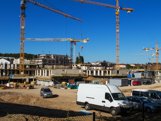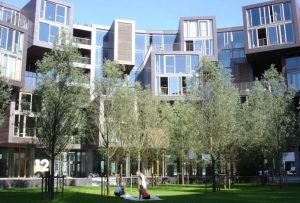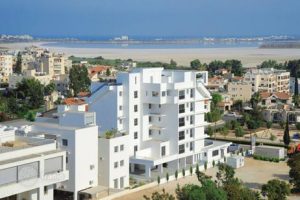Construction in Germany: disassemble risks
 How to make money on real estate in Europe? The most obvious option is to rent it: for example, to local residents, tourists or students. But analysts are talking about a new pan-European trend – a decrease in the profitability of the rental business (according to PwC’s calculations, it fell from 6% in 2009 to 4% in 2017).
How to make money on real estate in Europe? The most obvious option is to rent it: for example, to local residents, tourists or students. But analysts are talking about a new pan-European trend – a decrease in the profitability of the rental business (according to PwC’s calculations, it fell from 6% in 2009 to 4% in 2017).
In an effort to increase profitability, buyers are beginning to look closely at value-added projects – the construction and reconstruction of real estate abroad. The results of an analytical study of the international real estate broker Tranio show that every tenth Russian-speaking real estate investor is interested in construction projects abroad.
Value-added projects bring investors 8–15% per annum, but they are considered more risky among other types of investments. Ekaterina Raznikova, Senior Project Manager at Tranio in Germany, tells how to protect herself by investing in construction in the most stable European economy.
Why Germany?
The risks of development projects are the same in all countries: banks may refuse to finance, public authorities delay the issuance of necessary permits, building materials go up in price, new properties are not selling out as quickly as planned, etc. However, the investment climate in all states is different. It is especially attractive in Germany. And it’s not just the power and stability of its economy (German GDP growth accelerated from 0.4% in 2013 to 4.2% in 2018, and unemployment during this period decreased from 5.8 to 3.4%).
About any changes in the German law becomes known in advance, the rights of investors are protected by law, and all processes relating to the purchase, maintenance and sale of real estate are strictly regulated.
In most cases, Tranio customers who are interested in value-added projects and intend to meet the budget from 1 to 5 million euros consider building houses for 10–20 apartments.
Why do we most often advise them to Germany? The fact is that most of the risks associated with the construction of residential buildings are leveled by German law. And competent technical consultants, lawyers and tax specialists will help to avoid the pitfalls that may occur on the way of the investor.
Minimize the risks!
1. Refusal to finance
First of all, it is worth noting that not all banks in Germany work with lending to foreign customers (this is due to a number of additional procedures that complicate the preparation and execution of transactions for banks). The same banks that are willing to cooperate with foreign investors (Sparkasse, Volksbank, etc.) may have significantly different requirements for potential borrowers.
The reasons why banks refuse to provide financing vary widely, but the following are especially common:
the borrower’s lack of credit history in Germany (if the borrower is a newly created GmbH (LLC), registered in Germany);
a little-known project team (when evaluating a project, the bank closely analyzes the experience of its participants in the implementation of similar projects);
an incomplete set of documents (for example, if a company implementing a development project is registered for an investor, he must obtain a number of licenses in accordance with German law);
problems with compliance and KYC (Know Your Client) procedures. In accordance with the law, banks check the data on legal entities that have applied to them, they are studying the legality of their business as a whole and of the project in support of which a loan is planned. The activities of banks are aimed, among other things, at countering money laundering, terrorist financing and tax evasion. The potential borrower must provide documents confirming the sources of origin of funds attracted to the project.
The task of a good consultant is to provide a successful solution to all the problems his client may face.
2. The risk of non-receipt of building permits
You can start building in Germany with two main documents — a construction plan and a building permit (baugenehmigung).
The urban development plan (bebauungsplan) contains all the information relating to the development of a land plot (its area, the density of development, the types of objects allowed for construction on it, etc.). Most plots are sold with a town planning plan!
In the urban plan reflect any changes associated with the building: its expansion or change of destination (for example, in the case of the reconstruction of a supermarket in a restaurant)
In the urban development plan reflect any changes associated with the building: its expansion or change of destination (for example, in the case of the reconstruction of the supermarket in the restaurant) Canopus / Depositphotos
The building permit, based on the data specified in the urban plan, is prepared by the architect.



